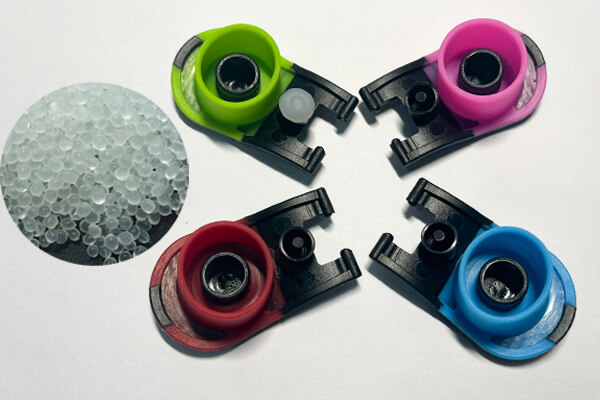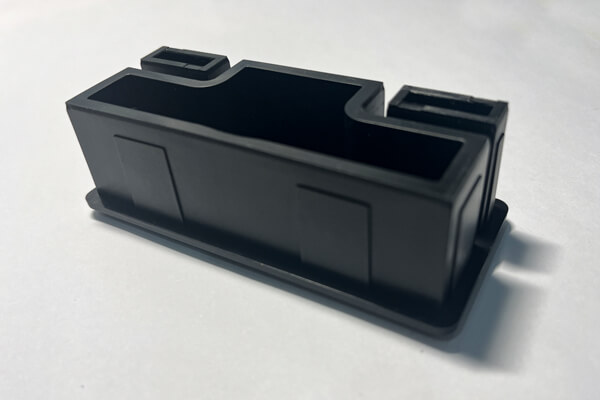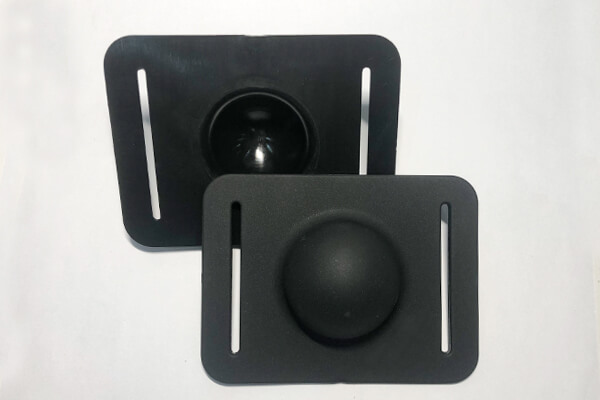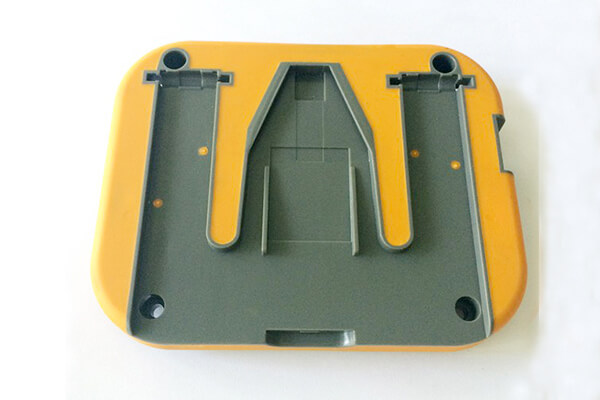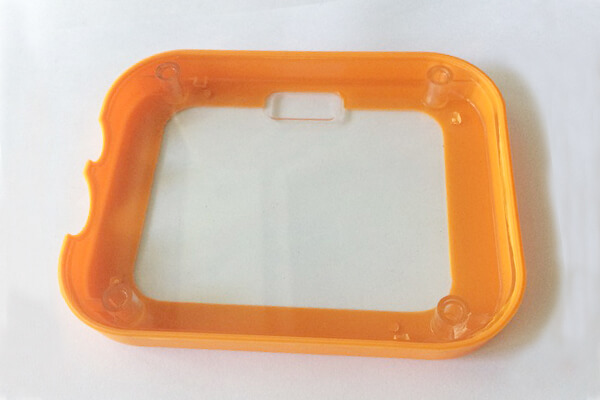How to Solve 8 Common Problems of TPE Injection Molding Surfaces
The quality and appearance of TPE injection molding are affected by many factors. In the production process, every step must be strictly controlled. As far as TPE elastomers are concerned, shrinkage, fluidity, stress cracking and cooling rate are the key factors to be considered when TPE injection molding. This article will introduce 8 problems and solutions that are prone to occur in TPE injection molding.
Flow Traces
The surface of the molded products appears in different luster streaks phenomenon. Generally speaking, there are the following three types of flow traces during the resin injection molding:
- 1. Narrowly spaced record streak-like.
- 2. Fairly wide-spaced stripes of the same phase appear on the top and bottom of the molded product surface.
- 3. Fairly narrowly spaced stripes in which an ectopic phase appears on the upper and lower shells of the molded product.
Solution: It can be solved by these methods. Similar to adding pure monomer resin, adding injection speed, injection mold temperature, adding injection harborage, adding resin temperature and injection rate, adding molding temperature, steel mold temperature or reducing injection speed, etc. It’s effective by adding injection speed and TPE injection molding mold temperature.
Poor Mold Release
Poor releasability means that the molded product is difficult to remove from the mould or fully misshaped during removal. Adhesive materials can easily cause this problem. However, it can be improved by adding a release agent to the material or applying a release agent to the mold before injection molding. Inadequate cooling of the molded product( inadequate solidification) is also prone to such a problem, so it’s veritably necessary to sufficiently cool the molded product.
In addition, the unreasonable design of the mold will also make it difficult to demold, especially in locations that are easy to stick to, such as the injection gates and the injection channels. It is very effective to increase the pull-out angle of the injection port and widen the injection channel.
Aging
Phenomenon: The mechanical properties of the product are obviously reduced, and the appearance quality has deteriorated.
Reason: The heat resistance and ultraviolet resistance of polymer materials are poor. This is more likely to cause product aging. The mechanical properties of most plastic products are significantly reduced due to aging, and the appearance quality deteriorates at the same time.
Solution: The method of enhancing the heat resistance and weather resistance of the material by adding appropriate UV absorbers and light stabilizers. This can inhibit the aging phenomenon to a certain extent.
The Color Is Not Uniform
When using thermoplastic elastomers TPE plastic particles and a dry mixture as the master mixture of pigments for coloring, the phenomenon of uneven color of molded products is easy to occur. As a countermeasure, it is effective to increase the screw pressure and strengthen the mixing when the filler is intensified.
Whitening Phenomenon
It means that the stabilizer and other compounding agents resettle to the surface of the molded product, and the surface shows a white phenomenon like being sprayed with powder paint.
Reason: Substantially due to the inordinate collaboration of stabilizer or incompatibility with polymer.
Solution: When this type of problem occurs, a stabilizer with good comity with the polymer should be selected or the quantum of the stabilizer should be controlled within the optimal range. Secondly, it’s also veritably effective to replace it with a stabilizer with a high relative molecular mass. In addition, there are also stabilizers that play their functions by migrating to the surface of the injection molded parts.
For illustration, antistatic agents, lubricants, etc. For this kind of stabilizer, it is very necessary to select a stabilizer that is difficult to whiten even if it migrates.
Whitening problems infrequently do when used in general surroundings, but in high temperature, moisture, and long-term out-of-door use, it’s necessary to add heat-resistant stabilizers and rainfall-resistant stabilizers to ameliorate continuity. Especially at high temperatures, because it’s easy to beget migration, the choice of stabilizer is also veritably important.
Overflow
Occasionally resin overflow from the cavity can cause burrs. At this time, you should first try to reduce the filling amount, reduce the holding pressure and shorten the holding time, and pay attention to repairing the mold.
Shrinkage
In the molding process of plastic varieties, thermoplastic plastics also have volume changes caused by crystallization, strong internal stress, large residual stress frozen in plastic parts, strong molecular orientation and other factors, so compared with thermosetting plastics, the shrinkage rate is larger. , the shrinkage rate range is wide and the directionality is obvious. In addition, the shrinkage rate after molding, annealing or humidity conditioning treatment is generally larger than that of thermosetting plastics.
When designing the mold, according to the shrinkage range of various plastics, the wall thickness and shape of the plastic part, the form, size and distribution of the feeding port, the shrinkage rate of each part of the plastic part is determined according to experience, and then the cavity size is calculated. For high-precision plastic parts and when it is difficult to grasp the shrinkage rate, the following methods should be used to design the mold:
- 1. Take the smaller shrinkage rate for the outer diameter of the plastic parts, and the larger shrinkage rate for the inner diameter, so as to leave room for correction after mold trial.
- 2. The mold test determines the form, size and molding conditions of the gating system.
- 3. The plastic parts to be post-processed are post-processed to determine the dimensional change (the measurement must be done after 24 hours after demoulding).
- 4. Correct the mold according to the actual shrinkage.
- 5. Retry the mold and change the process conditions to slightly modify the shrinkage value to meet the requirements of the plastic parts.
Stress Cracking and Melt Fracture
Some plastics are sensitive to stress, are prone to internal stress during molding and are brittle and easy to crack.
In order to reduce internal stress and increase crack resistance, in addition to adding additives to the raw materials to improve crack resistance, attention should also be paid to drying the raw materials and selecting reasonable injection molding conditions.
When designing the mold, the drafting slope should be increased, and a reasonable feeding port and ejector mechanism should be selected. During molding, the material temperature, mold temperature, injection pressure and cooling time should be properly adjusted to avoid demolding when the plastic parts are too cold and brittle.
TPE Injection Molding and Overmolding Service
In order to obtain products with good impact resistances, we often choose TPE for injection molding products. TPE material combines the advantages of the high elasticity of thermoplastic rubber and the processing performance of plastics and can be processed by general thermoplastic molding machines. In the injection molding process, the heating and hardens molding conditions of TPE are easier to control, and it has excellent colorability, and no vulcanization is required in the molding preparation. TPE products have good elasticity, soft hand feel, and good fatigue resistance and temperature resistance. This material is very environmentally friendly and can be used in products that come into contact with food, as well as toy dolls, adult products, etc. Waste and leftovers can be 100% recycled, which is the preferred raw material to replace PVC, rubber, and silicone, and has occupied the rubber and plastics industry.
At Sungplastic, our injection molding services also include TPE overmolding. It is to put the already formed hard plastic parts, such as ABS, PC and nylon parts, into the cavities of the secondary molding mold, and then use TPE for secondary injection molding. After cooling and molding, the soft TPE will be very well wrapped on the hard plastic parts. This enhances the overall strength, surface impact resistance and aesthetics of the product. Of course, since every project is unique, you should work closely with your manufacturing partner to find realistic solutions to help you meet your product development goals.
Contact us today to speak to our engineers, who can offer you a variety of solutions to meet your product goals.
About Sungplastic
Sungplastic is a plastic product manufacturer with rich experience in injection molding. According to the different product development requirements, we flexibly adjust the manufacturing process to achieve high quality, high efficiency and more economical.
We offer a variety of manufacturing services: Rapid Prototyping, Tool Making, Injection Molding, Product Design and Development, CNC Machining and Metal Stamping. You can choose from a variety of plastics, silicone rubber, or metal for your product. Regardless of mass production or small batch customization, Sungplastic has always been committed to providing assured, efficient and more economical one-stop processing services for your projects.
Contact us for a free quote and project review.
Get a free quote and design analysis today.
We’ll reply to you within 6 working hours.
We respect your privacy.
+86 139 2927 4777 (WhatsApp, Wechat)

